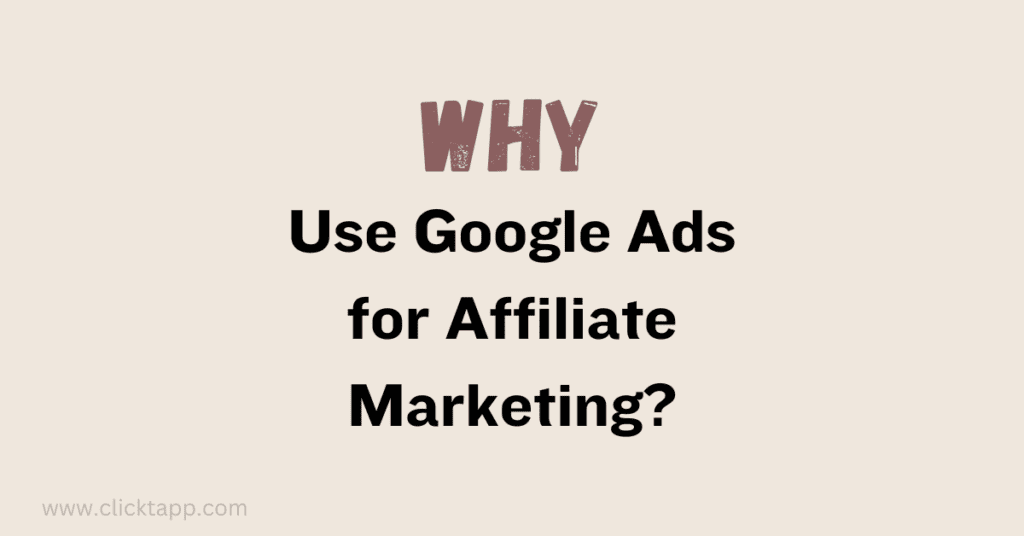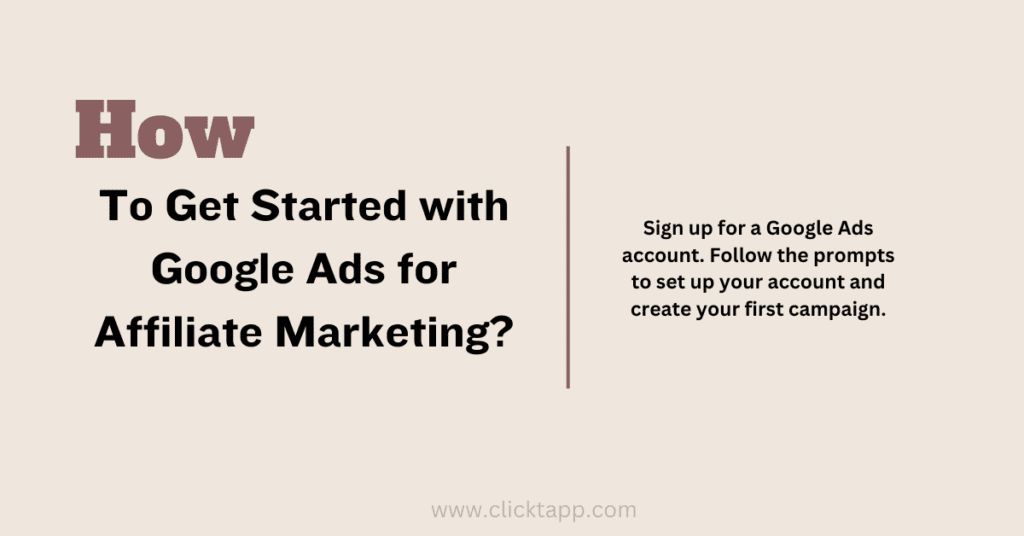How to do Affiliate Marketing
Affiliate marketing is one of the most popular ways to monetize a website or blog. By promoting products or services from other companies, affiliates can earn commissions for each sale or action generated through their referral links. While there are many strategies for promoting affiliate offers, one effective method is using Google Ads. In this guide, we’ll explore how to leverage Google Ads for affiliate marketing, along with frequently asked questions about this approach.
What is Affiliate Marketing?
Affiliate marketing is a performance-based marketing strategy where affiliates earn a commission for promoting products or services from other companies. Affiliates earn a commission when a user completes a specific action, such as making a purchase, signing up for a trial, or filling out a form, through their referral link.

Why Use Google Ads for Affiliate Marketing?
Google Ads, formerly known as Google AdWords, is one of the most powerful advertising platforms available today. It allows advertisers to reach a highly targeted audience through various ad formats, including search ads, display ads, and video ads. Here are some reasons why Google Ads is a great choice for affiliate marketing:
- Highly Targeted Traffic: With Google Ads, you can target specific keywords, demographics, interests, and geographic locations to reach your ideal audience.
- Scalability: Google Ads allows you to scale your campaigns based on your budget and goals. You can start small and gradually increase your investment as you see positive results.
- Fast Results: Unlike organic methods like SEO, which can take time to see results, Google Ads can drive targeted traffic to your affiliate offers almost instantly.
- Measurable Results: Google Ads provides detailed analytics and conversion tracking, allowing you to measure the performance of your campaigns and optimize them for better results.

How to Get Started with Google Ads for Affiliate Marketing:
- Choose Your Affiliate Offers: Before you start advertising, select the affiliate offers you want to promote. Choose products or services that are relevant to your audience and have a proven track record of converting.
- Create Your Google Ads Account: If you don’t already have one, sign up for a Google Ads account. Follow the prompts to set up your account and create your first campaign.
- Set Your Budget and Bidding Strategy: Determine your budget for the campaign and choose a bidding strategy that aligns with your goals, whether it’s maximizing clicks, conversions, or return on ad spend (ROAS).
- Create Compelling Ad Copy: Write attention-grabbing ad copy that highlights the benefits of the product or service you’re promoting. Use relevant keywords and a strong call-to-action to encourage clicks.
- Select Target Keywords: Choose relevant keywords related to your affiliate offer that you want your ads to appear for. Use Google’s keyword planner tool to research keywords and estimate their traffic potential.
- Set Up Conversion Tracking: Install conversion tracking on your website to track the actions taken by users who click on your ads, such as purchases or sign-ups. This will help you measure the success of your campaigns and optimize for better results.
- Monitor and Optimize Your Campaigns: Continuously monitor the performance of your campaigns and make adjustments as needed. Test different ad creatives, targeting options, and bidding strategies to optimize your ROI.

FAQs about Affiliate Marketing with Google Ads:
1. Can I promote any affiliate offer with Google Ads?
While Google Ads does allow affiliate marketing, there are certain restrictions and guidelines that you must adhere to. For example, Google prohibits the promotion of certain types of products and services, such as gambling, adult content, and illegal activities. Additionally, some affiliate networks may have their own restrictions on what can be promoted via paid advertising.
2. How much does it cost to advertise on Google Ads?
The cost of advertising on Google Ads depends on various factors, including your bidding strategy, competition, and the quality of your ads. You can set a daily budget for your campaigns, and Google will never exceed this amount. Additionally, you only pay when someone clicks on your ad (cost-per-click) or takes a specific action (cost-per-action).
3. How can I improve the performance of my Google Ads campaigns?
To improve the performance of your campaigns, focus on optimizing your ad copy, targeting options, and landing pages. Test different ad variations to see which ones resonate best with your audience, and refine your keyword targeting to reach the most relevant users. Additionally, regularly review your campaign data and make adjustments based on what’s working and what’s not.
4. Are there any best practices for affiliate marketing with Google Ads?
Some best practices for affiliate marketing with Google Ads include choosing high-quality affiliate offers, targeting specific keywords and audiences, and providing valuable content on your landing pages. It’s also important to comply with Google’s advertising policies and ensure that your ads are relevant and engaging to users.
Conclusion:
Google Ads can be a powerful tool for affiliate marketers looking to drive targeted traffic to their offers and generate commissions. By following the steps outlined in this guide and staying updated on best practices, you can leverage Google Ads to effectively promote affiliate offers and maximize your earnings. Remember to continuously monitor and optimize your campaigns to achieve the best results possible.



Pingback: Google Ad Management Services: Boost Your Business - Clicktapp
Pingback: Digital Marketing and Affiliate Programs: A Beginner Guide - Clicktapp